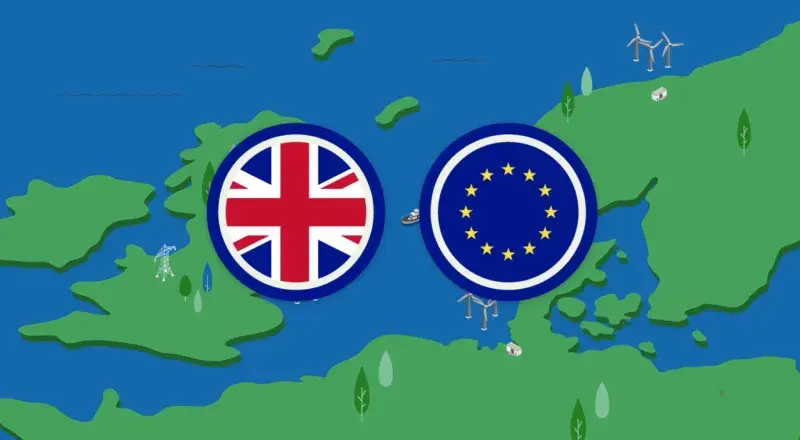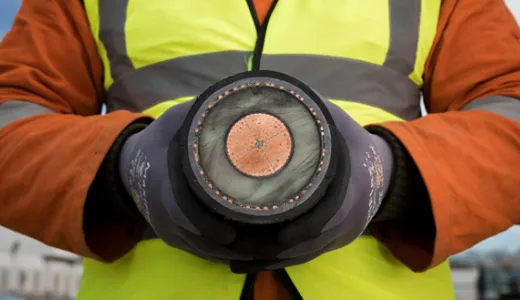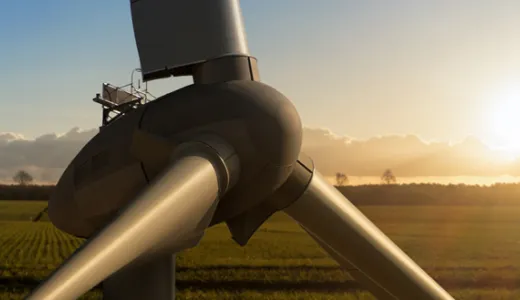The North Sea: an energy powerhouse of the future
As the UK moves away from fossil fuels and towards the transition to clean energy, increasing generation from renewable sources is crucial to power our homes and businesses with more clean, affordable and secure energy.
The North Sea holds huge potential for both the UK and Europe to deliver great increases in offshore wind energy and is seen as the ‘engine room’ of the UK’s energy transition.
Find out how we’re working, collaborating and innovating to harness the power of the North Sea for a cleaner energy future.
The UK’s biggest source of offshore wind

The North Sea is one of the UK’s best sources of consistent offshore wind energy as the area is extremely windy with a relatively shallow sea, which makes it a perfect location for offshore wind farms. So it’s no surprise that the North Sea is already home to the world’s largest offshore wind farm – Dogger Bank – which we connected to the UK’s electricity transmission network in 2023. Previously the largest offshore wind farms were Hornsea 1 and Hornsea 2, which are also located in the North Sea.
Offshore wind will play a key role in the transition to clean energy and helping the UK to achieve net zero carbon emissions by 2050. That’s why the UK government has set an ambition for 50GW of offshore wind power generation by 2030, which is enough to power nearly every home in the country. By 2030 the North Sea alone could provide up to 120GW of offshore wind generation – enough to power over 120 million homes.
Sharing clean power across the North Sea
On occasions when there’s a surplus of renewable energy being generated – such as from the North Sea’s huge offshore wind farms – we also have technology in place to ensure that it doesn’t go to waste, by trading and sharing this energy with our European neighbours.
Interconnectors: today’s clean energy solution
Currently, this excess power is shared via interconnectors; high-voltage cables that connect the electricity systems of neighbouring countries. When one country is generating a surplus of clean energy, it can share the energy with another country and vice versa.
We already have interconnectors that link the UK to France, Belgium, the Netherlands, Denmark and Norway, and each year they help to power around 8 million UK homes.
Offshore Hybrid Assets (OHAs): the future of North Sea interconnection
Our interconnectors currently operate ‘point to point’, meaning that they connect one country’s energy system to another’s. But given the huge increase in offshore wind capacity needed to help achieve net zero, the next generation of interconnection will see offshore wind and interconnectors working together as a combined asset, creating an offshore hub for green energy.
OHAs (formerly known as multi-purpose interconnectors), would connect clusters of offshore wind farms to multiple countries at once via interconnectors – a concept referred to by some energy experts as a ‘meshed grid.’
We’re developing a new generation of innovative OHAs that will help to speed up the connection of offshore wind from the North Sea and maximise the use of wind generation. OHAs will also reduce the impact on local communities as they would reduce the amount of connection points and onshore infrastructure required to connect this clean energy to the shore.
Energy islands
Energy islands are essentially ‘offshore power plants’ that gather renewable electricity from hundreds of nearby wind turbines, before distributing it to several nations via OHAs and interconnectors.
They will serve as hubs that can better connect the energy that’s generated from offshore wind to the energy systems in the region around the sea that they’re in.
The North Sea will be the location for the world’s first energy island, which is being built 45km off the Belgian coast – construction started this year and is due to be finalised by mid-2026. Princess Elisabeth island will serve as a hub for future interconnectors, including the proposed Nautilus link.

The benefits of interconnection with neighbouring countries include:Security of supplyInterconnection strengthens the security of energy supplies by providing flexible and reliable access to large volumes of electricity. Neighbouring countries can support each other when domestic energy production is not sufficient to meet demand. Connecting much more renewable energyTo meet its net zero ambitions, the UK needs to connect huge volumes of renewable energy resources in the next decade, particularly offshore wind. Interconnection maximises the use of renewable energy by giving an efficient way to both import and export clean power. Balancing rapid changes in supply and demandRenewable generation is less predictable than traditional thermal generation, which means in future it could prove more challenging for electricity system operators to balance supply and demand. Interconnection helps to smooth out these peaks and troughs by making large amounts of electricity available at the touch of a button. Lowering energy billsWhen cheaper power is available from neighbouring countries, it can be imported and vice versa, helping to give Britain access to lower-priced electricity. As increased interconnection helps to bring down wholesale prices, consumers could benefit from lower energy bills in the long term. |

Collaborating with Europe for a cleaner energy future
To meet the ambitious UK and European climate change targets, working together for a coordinated approach to offshore development is vital. That’s why we’re designing the renewable energy infrastructure of the North Sea in partnership with our European neighbours. Creating an integrated North Sea grid will help to take advantage of the rapid growth in offshore wind and strengthen cross-border interconnector links. Close cooperation in areas such as electricity trading, carbon markets and joint pilot projects will bring numerous benefits to consumers both in the UK and Europe, such as improved energy security and lower energy bills in the long term.
Connecting the North Sea’s energy to homes and businesses
As increasing amounts of renewable energy is generated out at sea, our electricity grid – the network of cables, pylons and substations that transmit electricity around the country – needs to be upgraded in order to carry this offshore energy from where it’s generated to where it’s needed; our homes, businesses and communities.
To do this, we’re carrying out the largest overhaul of the electricity grid in generations. Known as The Great Grid Upgrade, these infrastructure projects across England and Wales are helping to connect more renewable energy – including that generated from the North Sea – boosting energy security, affordability and helping the nation become more self-sufficient.
Read more about The Great Grid Upgrade
The information in this article is intended as a factual explainer and does not necessarily reflect National Grid's strategic direction or current business activities.





